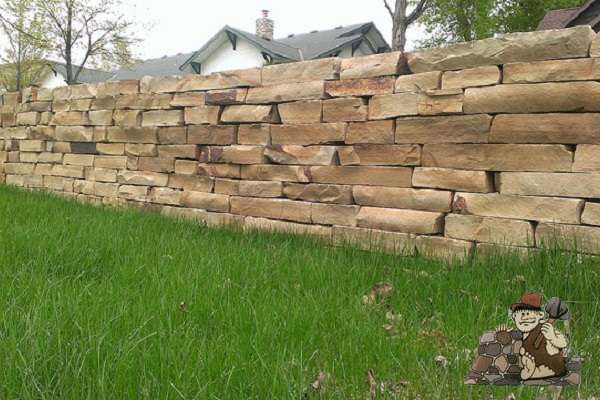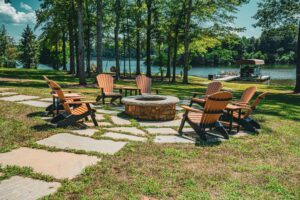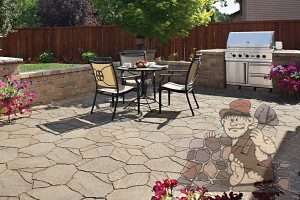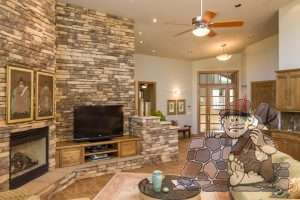“Like a negative to a photograph, walls are most visible when life is most invisible. Typically, this occurs in January when snow frames the wall from bottom to top and when the strengthening, crystal-clear sun casts strong shadows,” wrote Robert M. Thorson, geologist, and stone wall expert, in his field guide, Exploring Stone Walls.
During the winter months, stone walls become most noticeable in landscape design. They add interest to an otherwise dormant area. Today, they are widely used to control drainage, provide a border or division, create privacy, and provide a decorative element to the landscape.
The types of stone walls are as numerous as their uses. If you are thinking of adding one to your landscape, here are some of the most common types.
Dumped Walls
These are simply rows of piled stones. The stones are often unceremoniously tossed in piles, such as when farmers are clearing land. But they are not small clustered areas. Expert Robert M. Thorson defines a stone wall as, “any continuous row of large stones or stack of smaller ones that is more than four times as long as it is wide.”
Tossed Walls
When stones are stacked loosely, they reflect the attention that went into building them. Most old New England walls are tossed and represent a time when farmers began taking more interest in the appearance of the land instead of just trying to survive. Dry bolder or Riverrocks stacked loosely in a garden are examples of tossed walls.
Laid Walls
Requiring the most effort because of their orderliness, laid walls fit stones into a defined pattern. A fieldstone wall is a good example for today’s landscapes. Fieldstone is harvested locally and sorted into flats, rounds, weathered stone, sizes, and a mixed pile. The more sorting, the more orderly the wall. Fieldstone is well suited for any usage from a low, freestanding wall to a large, retaining wall. Stacked drystones are another example of a traditionally laid wall that is very popular for decorative use because of the flat, even structure that is formed.
Mosaic Walls
These feature different sizes and colors of stone arranged in a geometric pattern. Mosaic walls focus on the decorative design that is achieved. This causes the construction to be less sturdy and therefore requires the wall to be mortared. A split-face wall is an example where freshly broken fieldstone or quarried stone is split with the very flat side being used to face the wall.
Veneer Walls
A thin stone veneer wall is a mortared stone wall where thin stone is applied to a surface. Thin stone veneer is lightweight and versatile, allowing different uses of walls to be constructed economically. With a wide choice of stone, colors and patterns, a thin stone veneer wall gives both function and decorative appeal. Some of their popular uses include walls for exterior or interior building entrances, patios, and gardens.






